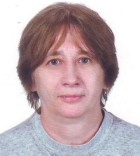
Prof. Irina Shtangeeva
Institute of Earth Sciences, St. Petersburg State University, Russia
Title: Element concentrations in plant as an indicator of the plant systematics
Abstract:
Native populations of plants include different
plant species that differ at physiological, biochemical, and genetic levels. We
may assume that these specific features partially result from quantitative distributions
of different macro- and trace elements in the plants. During recent years an
impressive progress has been made in the understanding of the processes of
uptake and pathways of various chemical elements in plants. It was shown that
different genotypes may differ in the demands for mineral element supply and
capacity of the element uptake, transport and involvement in the plant metabolism. Differences in the plant mineral
nutrition have been recognized by both agronomists and molecular biologists. It
has been assumed that each plant species has developed a specific element composition,
and concentrations of different elements in a plant reflect first of all plant
nutrient requirements rather than concentrations of the nutrients in soil.
Different plants growing in the same place often have different concentrations of
trace and macro-elements. It is important to remember that under ordinary
conditions, each plant part may have its own characteristic concentrations of
elements. Therefore, comparisons of element concentrations in plants may
not be referred to the plant as a whole but should refer to the same plant
parts (e.g. roots, or leaves, or seeds). Lastly, we may assume that not only
concentration of one or another element in a particular plant part of any two
plant species growing in the same environment may differ significantly but
relations between elements in the plants may also be different.
In the present work we compared different plant
species grown both in a field and in greenhouse. The basic idea was that not
only concentrations of organic compounds but also contents of macro- and trace
elements in the plant species, and probably relationships between elements in
different parts of the plants, may be different. The aim was to assess and to try
to explain the differences and similarities in the ability of the plants to uptake
and translocate different elements. We also studied relationships between
various elements in different parts of the plant species, stressing the
importance of not only organic but also mineral components as an additional
indicator of the plant classification.
Biography:
Affiliation
and work address:
Institute of Earth Sciences, St.
Petersburg State University, Universitetskaya nab., 7/9, St. Petersburg 199034 Russia, Tel:
007 812 687-61-22, E-mail: shtangeeva@gmail.com
Career/Employment:
2014 – senior researcher,InstituteofEarth Sciences,St. PetersburgUniversity
2006 – 2014 senior researcher, Chemical Department,St. PetersburgUniversity
1999 - 2006 - senior researcher,InterdisciplinaryCenter,St. PetersburgUniversity
1991 -1999 - senior researcher,InstituteofEarth Crust,St. PetersburgUniversity
1983 -1991 - researcher,InstituteofEarth Crust,St. PetersburgUniversity
1979 -1983 - junior research
scientist,InstituteofEarth Crust,St. PetersburgUniversity
1978 -1979 - engineer,InstituteofEarth Crust,St. PetersburgUniversity
Main
scientific interests:
Ecology, biogeochemistry,
multivariate statistics and modelling, modern analytical techniques